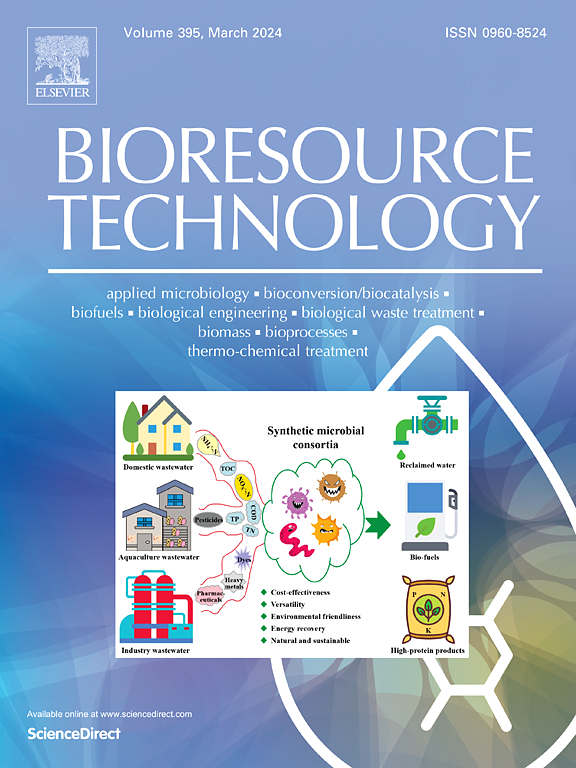Revealed mechanism of 3D-open-microarray boosting exoelectrogens Geobacter enrichment and extracellular electron transfer for high power generation in microbial fuel cells
IF 9
1区 环境科学与生态学
Q1 AGRICULTURAL ENGINEERING
引用次数: 0
Abstract
The anode enables raised microbial fuel cells (MFCs) performance via in-situ growth electroactive material. However, the role of fabricated microstructures in electroactive bacteria loading and extracellular electron transfer (EET) has been paid less attention. Here, MoS2 nanosheets are custom grown on carbon cloth to construct anode models with diverse surface microstructures. Surprisingly, the 3D-MoS2/NS-CC anode only 0.85 d enables the MFC to be started and achieves a maximum power density of 3.85 W/m2, which is significantly faster and higher than that of 2D-MoS2/NS-CC (3.6 d, 2.75 W/m2) and CC (4.46 d, 1.98 W/m2). As for the mechanism of 3D-MoS2/NSCC boosting MFC performance, this is attributed to the 3D-open-microarray preventing electroactive bacteria from shedding and facilitating to the establishment of excellent EET channels through the formed hybrid cell-electrode systems and Geobacter enrichment of up to 86.1 %. This research provides promising guidance for integrating nanomaterials and architecture to construct high-performance anodes in MFCs.

揭示了3d开放微阵列促进微生物燃料电池中高产能的外电菌Geobacter富集和胞外电子转移的机制
阳极通过原位生长的电活性材料提高了微生物燃料电池(mfc)的性能。然而,制备的微结构在电活性细菌负载和细胞外电子转移(EET)中的作用却很少得到关注。在这里,MoS2纳米片被定制生长在碳布上,以构建具有不同表面微观结构的阳极模型。令人惊讶的是,3D-MoS2/NS-CC阳极仅0.85 d就能启动MFC,并达到3.85 W/m2的最大功率密度,明显快于2D-MoS2/NS-CC (3.6 d, 2.75 W/m2)和CC (4.46 d, 1.98 W/m2)。至于3D-MoS2/ nscc提高MFC性能的机理,这归因于3d -open微阵列通过形成的混合电池-电极体系防止电活性细菌脱落,促进良好的EET通道的建立,以及高达86.1%的Geobacter富集。该研究为纳米材料与结构的结合在mfc中构建高性能阳极提供了有希望的指导。
本文章由计算机程序翻译,如有差异,请以英文原文为准。
求助全文
约1分钟内获得全文
求助全文
来源期刊

Bioresource Technology
工程技术-能源与燃料
CiteScore
20.80
自引率
19.30%
发文量
2013
审稿时长
12 days
期刊介绍:
Bioresource Technology publishes original articles, review articles, case studies, and short communications covering the fundamentals, applications, and management of bioresource technology. The journal seeks to advance and disseminate knowledge across various areas related to biomass, biological waste treatment, bioenergy, biotransformations, bioresource systems analysis, and associated conversion or production technologies.
Topics include:
• Biofuels: liquid and gaseous biofuels production, modeling and economics
• Bioprocesses and bioproducts: biocatalysis and fermentations
• Biomass and feedstocks utilization: bioconversion of agro-industrial residues
• Environmental protection: biological waste treatment
• Thermochemical conversion of biomass: combustion, pyrolysis, gasification, catalysis.
文献相关原料
公司名称
产品信息
阿拉丁
sulfur power
阿拉丁
anhydrous N, N-dimethylformamide
阿拉丁
thiourea
阿拉丁
Ammonium molybdate
 求助内容:
求助内容: 应助结果提醒方式:
应助结果提醒方式:


